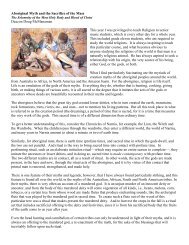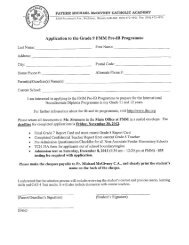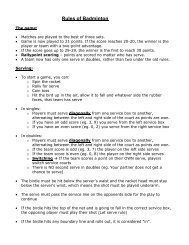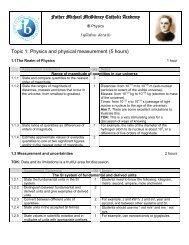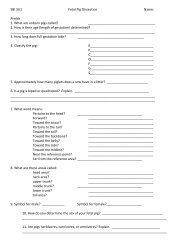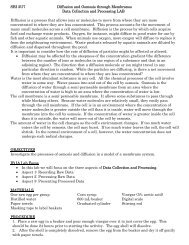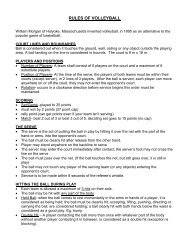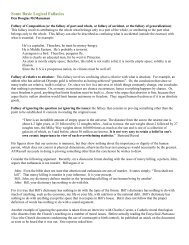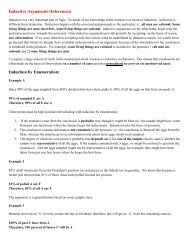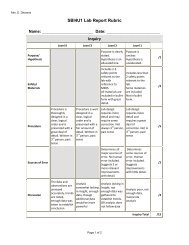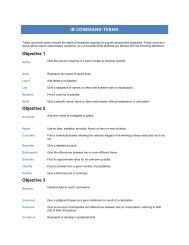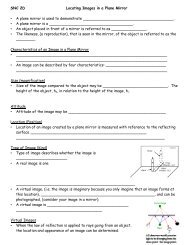Chemistry Review Manual 2
Chemistry Review Manual 2
Chemistry Review Manual 2
You also want an ePaper? Increase the reach of your titles
YUMPU automatically turns print PDFs into web optimized ePapers that Google loves.
3. Acids and Bases<br />
3.1 Brønsted-Lowry Theory<br />
According to the Brønsted-Lowry definition of acids and bases, an acid reacts with a base by<br />
exchanging an H + . For example,<br />
HBr + NH 3 → Br − + NH 4<br />
+<br />
Here, HBr is the H + donor – the acid – while NH 3 is the H + acceptor – the base. The H + is able to<br />
leave the acid because the H-Br bond is polarized – the bonding electrons are shifted towards the<br />
bromine atom. The Lewis definition of acids and bases explains that NH 3 is able to accept the H +<br />
because there is a lone pair of electrons on the nitrogen atom. These electrons are shared to<br />
become the fourth N-H bond in NH 4 + .<br />
Example 3.1: Identify the acid and base in the following reaction:<br />
NH 2 −<br />
+ HF → NH 3 + F −<br />
Approach: Look for the reactant that gained an H + , and that which lost an H + .<br />
The HF loses an H + . It is the H + donor – i.e., it is the acid. NH 2 − accepts the H + . It is the<br />
base. Note that an acid always has an H bonded to an electronegative atom (N, O, F, S, Cl,<br />
Br or I – often it is O). A base must have a lone pair of electrons to accept the H + . The lone<br />
pair is usually on an N atom (often seen for uncharged basic molecules) or an O atom<br />
(mostly seen for anionic bases).<br />
Acids and bases form acidic and basic aqueous solutions. Acids and bases can be molecules or<br />
ions.<br />
Salts form aqueous solutions by splitting into positive and negative ions that are solvated by<br />
water. For example,<br />
NaOH(s) → Na + (aq) + OH − (aq)<br />
Molecular compounds form aqueous solutions by becoming solvated by water. For example,<br />
acetic acid (vinegar) dissolves in water according to<br />
H 2 O<br />
CH 3 COOH(l) → CH 3 COOH(aq)<br />
Acids and bases react with water when in aqueous solution. Acids react by donating H + to water.<br />
For example,<br />
HCl(aq) + H 2 O(l) → Cl − (aq) + H 3 O + (aq)<br />
In this reaction, H 2 O acts as a base. It accepts an H + .<br />
Bases react by accepting an H + from water. For example,<br />
NH 2 − (aq) + H 2 O(l) → NH 3 (aq) + OH − (aq)<br />
Here, H 2 O acts as an acid. It donates an H + . Some substances, such as water, can behave as<br />
either acids or bases depending on what they react with. They are called amphoteric.<br />
Page 22 of 88



